Periodontal Disease
What Is Periodontal Disease
Periodontal disease is an infection of the gums and of supportive tissues surrounding the teeth. Many people develop gum and tissue problems. The good news is that periodontal disease can be controlled. In some cases, it can even be reversed. Periodontal treatment can make your mouth healthier and help preserve your teeth.
Scaling and Root Planing
This treatment is done by a dentist or a dental hygienist. Sometimes a special ultrasonic device is used to remove heavy deposits. Then plaque and tartar are removed (scaling), and the root surfaces are smoothed (root planing). This helps keep the area free of bacteria and may help ligaments to reattach, reducing pocket depth.
Bite Correction
Bite problems such as uneven bite can worsen bone loss. Grinding or clenching the teeth may contribute to the problem. A night guard or other ways of adjusting the bite can reduce pressure and help control the damage.
Antibiotics
Antibiotics are sometimes used to facilitate the clearing of infection. These antibiotics may be prescribed to be taken orally or they may be placed directly under the infected gum.
If You Need Surgery
Surgery is needed when periodontal disease has destroyed supportive tissue. These procedures reshape or restore lost bone and ligaments. This increases the chance of saving teeth that would likely have been lost. Sometimes, more than one type of procedure is done on the same tooth.
Bone (Osseous) Surgery
This procedure is used to smooth shallow craters in the bone due to mild or moderate bone loss. First, flap surgery is done to reach the damaged bone. Then your doctor reshapes the bone around the tooth to decrease the craters. This makes it harder for bacteria to collect and grow.
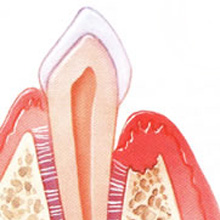
Supportive bone around the root is diseased and partially destroyed.
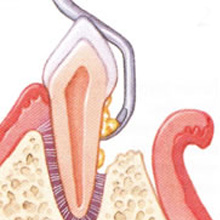
First, plaque and tartar are removed from the infected pocket.
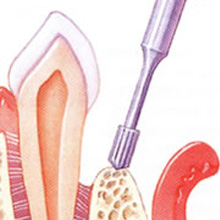
The bone is smoothed and reshaped, reducing spaces where bacteria can grow. A substance may be used to help the gum attach to the tooth.
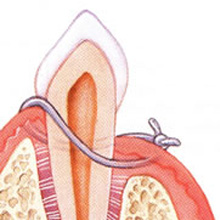
The gum is then closed over the reshaped bone at or below the original gumline. After the gum has healed, stitches dissolve or are removed.
Guided Tissue and Bone Regeneration
A special membrane is placed between gum and bone. This prevents gum tissue which grows quickly, from filling the space where bone was lost. That way, new bone has time to grow where it’s needed.
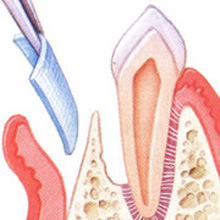
After cleaning, a special membrane is inserted between the gum and bone.
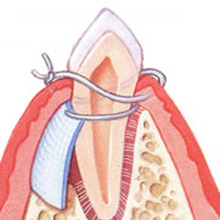
The membrane blocks unwanted tissue, allowing ligament fibers and bone to grow. Once strong ligament fgibers attach root to bone, the membrane dissolves or is removed. Stitches are also removed.
Bone Grafting
A graft helps your body replace lost bone. The graft may consist of your own bone, animal material, or bone from a tissue bank. A gel containing growth factors may also be used to stimulate the tissues to grow. These grafts serve as a platform for the regrowth of bone. This restores stability to your teeth.
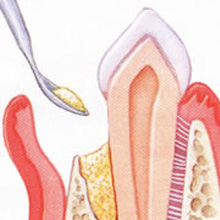
After cleaning, the graft material is packed into the area where bone has been lost. A special membrane may also be placed between the gum and bone.
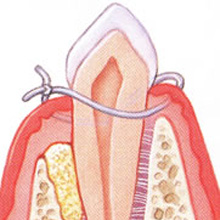
The gum is then closed. The graft may stimulate new bone growth. New bone tissue fills in the crater, providing strong support for the tooth. After healing, stitches dissolve or are removed.
Soft Tissue Grafting
Soft tissue is added to reinforce thin gums or to fill in places where gums have receded.
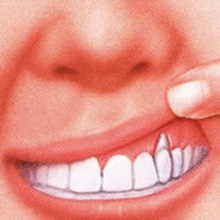
After cleaning, the graft material is packed into the area where bone has been lost. A special membrane may also be placed between the gum and bone.
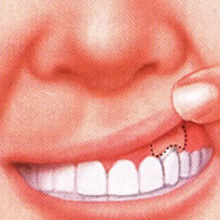
The membrane blocks unwanted tissue, allowing ligament fibers and bone to grow. Once strong ligament fgibers attach root to bone, the membrane dissolves or is removed. Stitches are also removed.